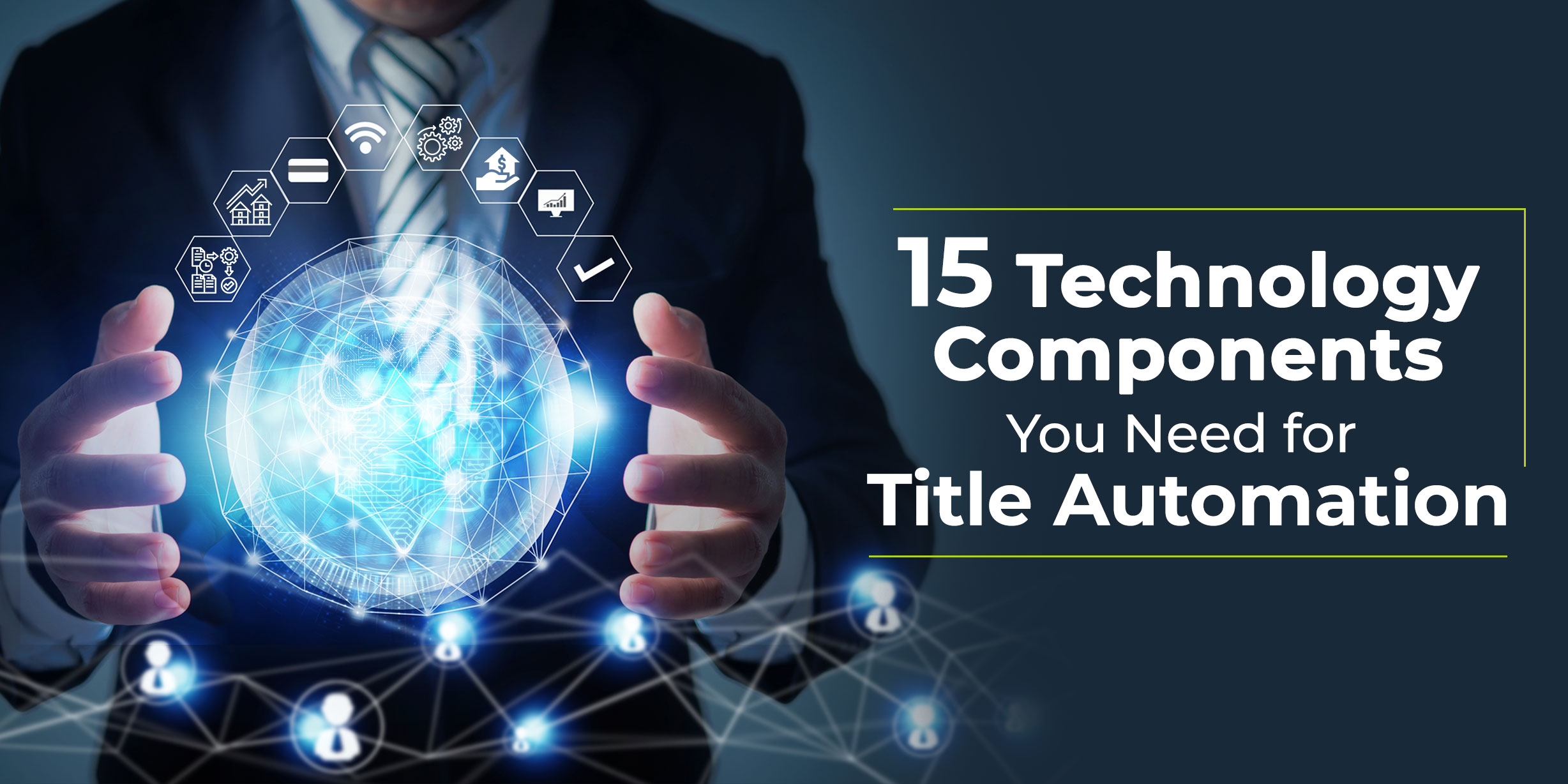The title process is one of the key stages in the mortgage value chain that can be automated to improve efficiency, minimize errors, and drive scalability. In previous articles, we have explained why the title process is a prime candidate for mortgage automation – the reasons range from iterative processes to more than five title tasks that could be easily automated.
The title industry, as it exists today, is also replete with age-old challenges like overburdening of employees with manual efforts and siloed systems. As a result, 50% of title professionals have more responsibilities than they can handle, and over half of CEOs and VPs need to handle five or more closings a month entirely on their own, instead of focusing on growth.
That is why title automation is the need of the hour in the mortgage industry, and in our experience, it can reduce as much as 75% of effort for your business. If you are looking to adopt title automation in upcoming quarters, here are the key technology components to watch:
1. Artificial intelligence (AI) and machine learning (ML)
AI and ML can process huge volumes of data and execute complex algorithms with little to no human intervention. As regulations change, ML lets you update the title automation solution easily without rewriting the business rules.
2. Optical character recognition (OCR)
OCR and its related technology, intelligent character recognition (ICR), make it possible to convert analog title processes to digital. It can extract data from unstructured files like screenshots and store them on a digital platform.
3. Robotic process automation (RPA)
RPA bots act as stand-ins for your human title executives and augment their capabilities. They can automatically perform repetitive tasks like transferring data between systems or conducting routine checks.
4. Hyperautomation
Hyperautomation is an advanced version of RPA, where AI and bots work together to align title automation with your overall business strategy. Using hyperautomation, one can scale the solution more easily.
Also read: Leveraging Hyperautomation to Transform Mortgage Processes: A Quick Primer
5. Automated document reviews
This is a fundamental technology component of title automation. It allows you to review lengthy and complex documents without the intervention of a human executive, checking data fields and entries against fixed industry parameters.
6. Predictive search recommendations
A title search involves looking up documents from massive public and third-party document repositories. This technology analyzes your queries to automatically predict which result would be most relevant.
7. Data extraction and conversion
Once a document is retrieved, title automation can find and extract the relevant information around taxes, locations, etc. It can combine and convert the information into a consumable format.
8. Automated skill assessment
Title process training is another area where automation can play a role. It can assess employee skills at regular intervals, suggest new learning milestones, conduct tests, and provide certifications.
9. Automated reconciliation
This technology allows title companies to reconcile payments and transactions. You will be able to detect issues, if any, in a timely manner and resolve them without holding a human executive accountable.
10. Customer service virtual assistants
Title automation can simplify how customers request and receive information in response to their queries. Virtual assistants can be available 24/7, access data in any system, and provide a prompt response.
11. Automated report generation
Automated reports can significantly reduce the complexities around title checks and audits. The solution will be able to assemble static reports or even dynamic dashboards relevant to a role.
Also read: 8 Myths Holding Back Mortgage Businesses from Using Automation Meaningfully
12. Scalable hosting on the cloud
The cloud is the bedrock of modern title automation since it means that you do not have to purchase and maintain your own infrastructure. Hybrid cloud is the ideal option, as it combines security and control with vendor-based services.
13. Cybersecurity
Cybersecurity, compliance, and fraud detection are other key areas as they ensure your systems are robust and protected against threats. Cybersecurity also maintains the confidentiality of title records as well as customer privacy.
14. Integration architecture and APIs
An integration-ready architecture allows title automation to incorporate new technologies as they evolve. For instance, blockchain may one day be used to conduct automated title checks, and you should be able to connect it via APIs.
15. Remote online notarization (RON)
RON became popular during COVID-19 as it allows title agents and notaries to collaborate without in-person contact. This automated solution will improve convenience and empower your agents wherever they are.
These 15 technologies can address some of the most pressing title process challenges today.
While it can seem overwhelming at first, an effective title automation solution will seamlessly intersect most or all of these technology components, along with a user-friendly interface for your title executives. At Nexval, we bring decades of experience in the mortgage sector, with deep specialization in title process modernization and automation.
To start your title automation journey today, speak with our Tech Gurus!


